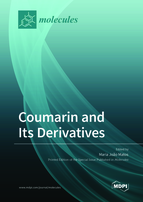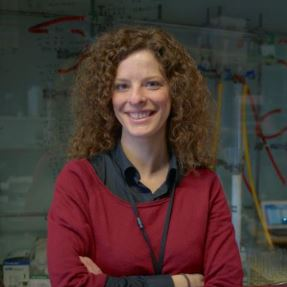Coumarin and Its Derivatives
A special issue of Molecules (ISSN 1420-3049). This special issue belongs to the section "Natural Products Chemistry".
Deadline for manuscript submissions: closed (31 March 2021) | Viewed by 81983
Special Issue Editor
Interests: coumarins; natural product chemistry; organic chemistry; medicinal chemistry; chemical biology; computational chemistry
Special Issues, Collections and Topics in MDPI journals
Special Issue Information
Dear Colleagues,
Coumarins are widely distributed in nature and can be found in a large number of naturally occurring and synthetic bioactive molecules. Their unique and versatile oxygen-containing heterocyclic structure makes them a privileged scaffold in medicinal chemistry. The large conjugated system, with electron-rich and charge-transport properties, is important for the interaction of this scaffold with other molecules and ions. Therefore, a great number of coumarin derivatives have been designed, synthetized, and evaluated on different pharmacological targets. In addition, coumarin-based ion receptors, fluorescent probes, and biological stains are growing quickly and have extensive applications to monitor timely enzyme activity, complex biological events, as well as accurate pharmacological and pharmacokinetic properties in living cells. The extraction, synthesis, and biological evaluation of coumarins have become extremely attractive and rapidly developing topics. Research articles, reviews, communications, and concept papers focused on the multidisciplinary profile of coumarins, highlighting natural sources and the most recent synthetic pathways, along with the main biological applications and theoretical studies, are welcome for this Special Issue.
Dr. Maria João Matos
Guest Editor
Manuscript Submission Information
Manuscripts should be submitted online at www.mdpi.com by registering and logging in to this website. Once you are registered, click here to go to the submission form. Manuscripts can be submitted until the deadline. All submissions that pass pre-check are peer-reviewed. Accepted papers will be published continuously in the journal (as soon as accepted) and will be listed together on the special issue website. Research articles, review articles as well as short communications are invited. For planned papers, a title and short abstract (about 100 words) can be sent to the Editorial Office for announcement on this website.
Submitted manuscripts should not have been published previously, nor be under consideration for publication elsewhere (except conference proceedings papers). All manuscripts are thoroughly refereed through a single-blind peer-review process. A guide for authors and other relevant information for submission of manuscripts is available on the Instructions for Authors page. Molecules is an international peer-reviewed open access semimonthly journal published by MDPI.
Please visit the Instructions for Authors page before submitting a manuscript. The Article Processing Charge (APC) for publication in this open access journal is 2700 CHF (Swiss Francs). Submitted papers should be well formatted and use good English. Authors may use MDPI's English editing service prior to publication or during author revisions.
Keywords
- coumarins
- natural products
- synthesis
- bioactivity
- fluorescent dyes
- computational studies
- analytical methods
- medicinal chemistry
- chemical biology
- drug discovery
Related Special Issue
- Coumarin and Its Derivatives III in Molecules (1 article)







